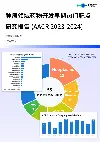Brain-Computer Interface (BCI) Technology: Revolutionizing Healthcare with Brain-Controlled Technology
2024-02-19
In the ever-evolving landscape where technology intersects with healthcare, Brain-Computer Interfaces (BCIs) are emerging as a transformative force, turning the once-fantastic imaginings of science fiction into tangible realities.
BCI technology points towards a future of more seamless integration between the human brain and external devices, unlocking unprecedented possibilities in healthcare applications. From diagnostics to treatment methodologies, BCI technology can unravel new dimensions of understanding and intervention, fundamentally altering the landscape of patient care.
The evolution of brain-computer interfaces
The inception of BCI technology marked a pivotal moment for individuals with disabilities, offering new avenues for communication and control. Initially, BCIs catered primarily to those with severe motor impairments or communication challenges, providing rudimentary but life-changing means to interact with their environment. For instance, early BCIs enabled individuals with paralysis to communicate using simple binary choices or control basic computer cursors with their thoughts.
Fast forward to today, and we find ourselves immersed in a sea of sophistication from the world of implants to non-invasive (wearable) products. BCIs have evolved into intricate systems with the ability to interpret complex neural patterns, unlocking the potential for more nuanced and sophisticated interactions. It’s not just about issuing commands. Today, it’s about deciphering the very language of the brain.
The impact extends even further, with applications from communicating and monitoring astronauts in space to controlling AR/VR devices. These technologies are reshaping how users navigate and interact with devices in boundless ways, introducing a new era of human-machine collaboration.
BCI technology and transforming patient care: What’s being developed now
There are a large array of applications for brain-computer interface technology across the entire medical field that are already being tested and utilized today. Below are some examples across multiple functions of healthcare:
Assistive technology and devices BCI devices currently translate brain and bio-signals into device commands. A good example: head word devices like a headband or glasses, that act as a ‘head mouse’ for controlling devices through head and eye movements, which is beneficial for those with motor disabilities.
Epilepsy EEG is widely used to detect abnormal brain activity associated with epilepsy, helping clinicians confirm the diagnosis and determine appropriate treatment strategies.
Patient monitoring EEG monitoring is employed during certain surgeries, such as those involving the brain or major blood vessels, to assess and ensure the patient’s brain function remains stable throughout the procedure. It is also used to assess brain activity in patients in a coma, helping healthcare providers understand the extent of neurological damage and guide treatment decisions.
Sleep disorders Brain wave patterns are monitored during sleep, aiding in the diagnosis and management of various sleep disorders, including sleep apnea and insomnia.
Traumatic brain injury (TBI) EEG is valuable in assessing brain function following TBI and related conditions, providing information on the severity of damage and aiding in treatment decisions.
These diverse applications of BCI technology showcase its capacity to fundamentally transform healthcare practices, enhancing the quality of life for many patients and healthcare practitioners.
BCI technology in healthcare: What’s next?
As we gaze into the future of BCIs in healthcare, the landscape appears incredibly promising, signaling a transformative era in patient care. While current advancements focus on aiding those with physical limitations, the scope of BCIs, as we just saw, is expanding to revolutionize various aspects of healthcare, from diagnostics to treatment modalities.It’s evident that we are only beginning to uncover the full capabilities of these interfaces.
There is still much research and development needed to improve signal quality and advanced AI and machine learning will also be vital in analyzing and applying this complex data effectively. Moreover, addressing ethical considerations and privacy concerns is paramount, and researchers and scientists will need to develop guidelines and frameworks to ensure that BCIs are used responsibly. With continued interdisciplinary research and collaboration, the journey of BCIs in healthcare promises to be as transformative as it is pioneering, with the full scope of their impact still to be discovered.
Below are some ways BCIs could advance patient care, if these goals are met:
Hearing impairments and devices BCI sensors in hearable devices will blend environmental, brain, and body data so the device will focus on the sounds the user is paying attention to, solving the “Cocktail Party Problem.”
Cognitive function and treatments The future wave of BCI applications will offer new strategies in mental health treatment. This includes neurofeedback therapy for conditions like ADHD, anxiety, and depression, where patients will be able to receive real-time feedback on brain activity, aiding in symptom reduction. Neurostimulation is expected to show promising results, particularly in depression treatment. Combined with BCI, a “closed-loop” treatment could be created. For autism disorders, BCI technology will be instrumental in developing personalized interventions. BCI-based cognitive therapy programs will also be beneficial for the aging population, enhancing memory, attention, and executive functions. Additionally, BCIs will be invaluable in the early detection of cognitive impairments, enabling more timely interventions for neurodegenerative disorders.
Chronic pain management BCIs are set to venture into chronic pain management, utilizing closed-loop neurostimulation to modulate pain receptors in the brain.
Neuroprosthetics In the world of neuroprosthetics, BCI technology will enable the control of prosthetic devices through wearables where users might be able to control an artificial hand using a writing band or BCI-controlled headband.
Neurological disorder diagnosis Moreover, as signal quality improves, BCIs will be able to offer non-invasive diagnostic capabilities for neurological disorders such as Alzheimer’s and Parkinson’s, marking a significant advancement in the field. The convergence of cutting-edge technology and neuroscience paints a picture of a future where BCIs play a pivotal role in not just addressing physical constraints but also in optimizing mental well-being and advancing the forefront of neurological healthcare. As research and development in this field continue to accelerate, the full spectrum of possibilities for BCIs in shaping the future of healthcare is yet to be fully explored.
This journey is not just about connecting the human brain to computers. It is about redefining how we understand, approach and experience healthcare. The symphony of technological innovation and human neuroscience is orchestrating a future where BCIs play an integral role in shaping a more inclusive, advanced, and compassionate healthcare ecosystem.
Photo credit: DrAfter123, Getty Images
更多内容,请访问原始网站
文中所述内容并不反映新药情报库及其所属公司任何意见及观点,如有版权侵扰或错误之处,请及时联系我们,我们会在24小时内配合处理。
靶点
-药物
-热门报告
立即开始免费试用!
智慧芽新药情报库是智慧芽专为生命科学人士构建的基于AI的创新药情报平台,助您全方位提升您的研发与决策效率。
立即开始数据试用!
智慧芽新药库数据也通过智慧芽数据服务平台,以API或者数据包形式对外开放,助您更加充分利用智慧芽新药情报信息。



